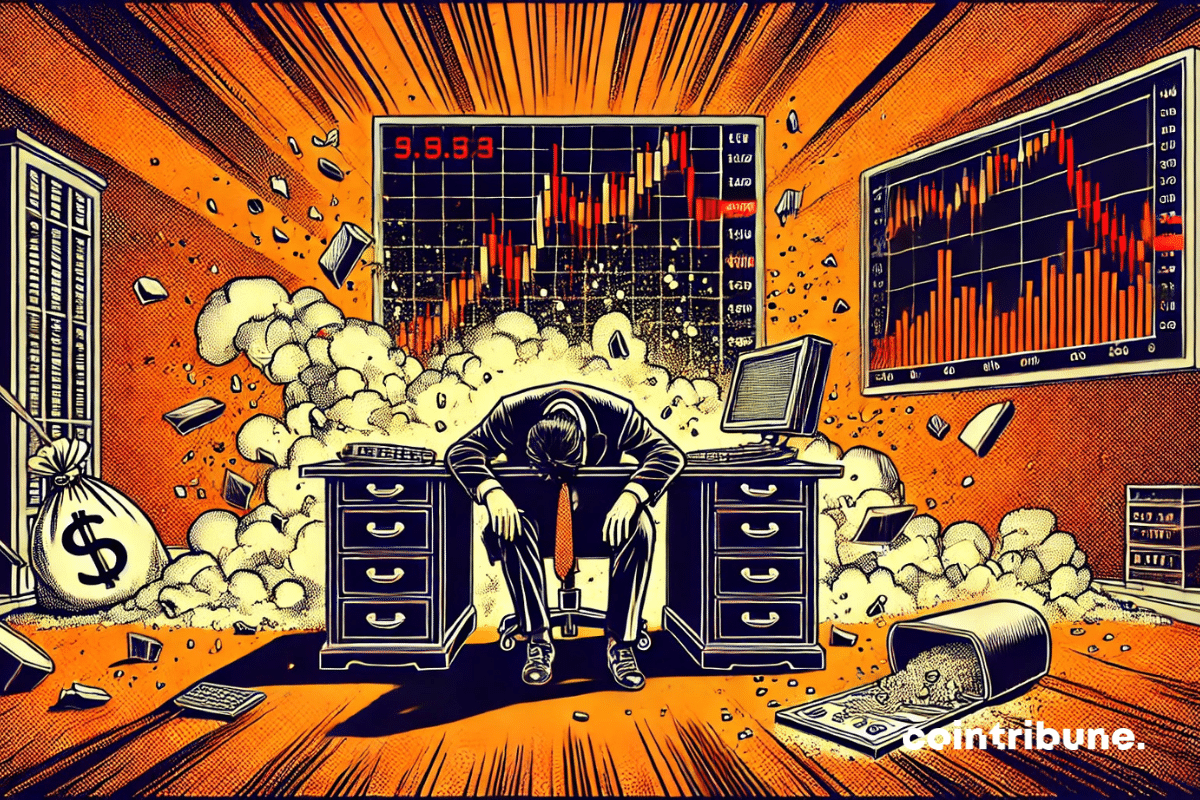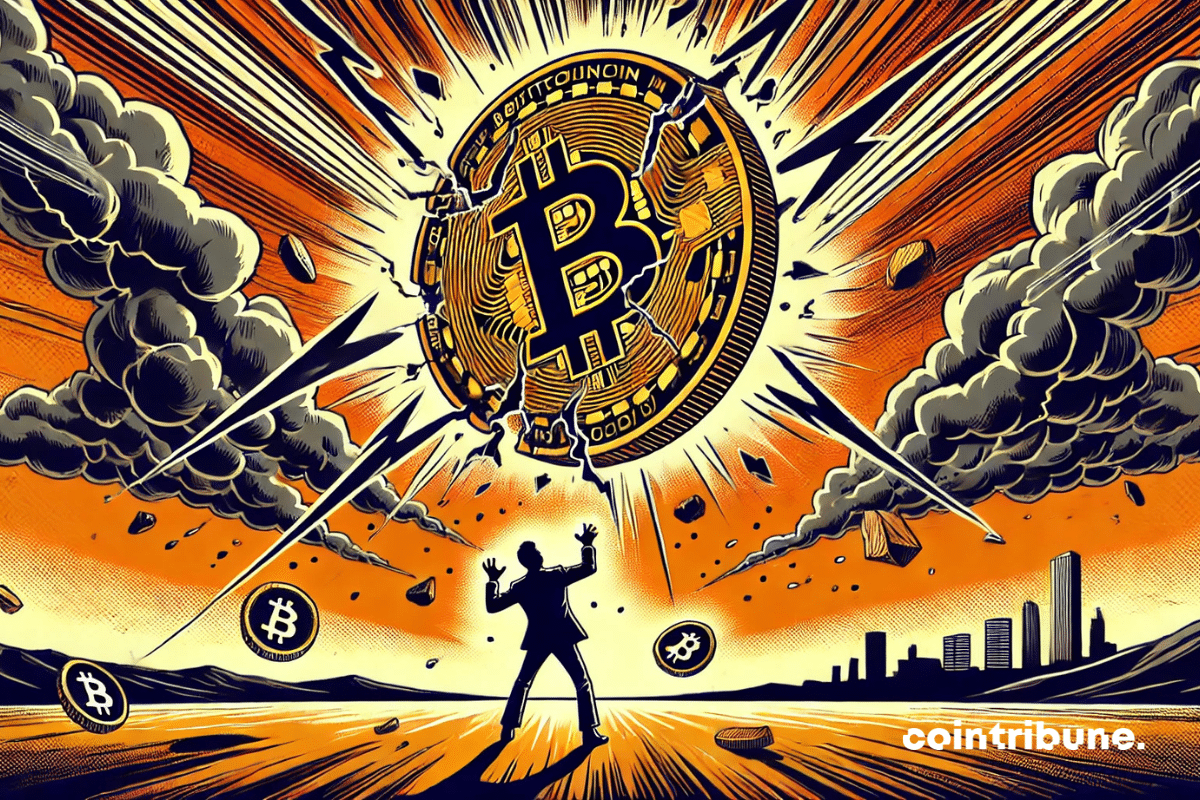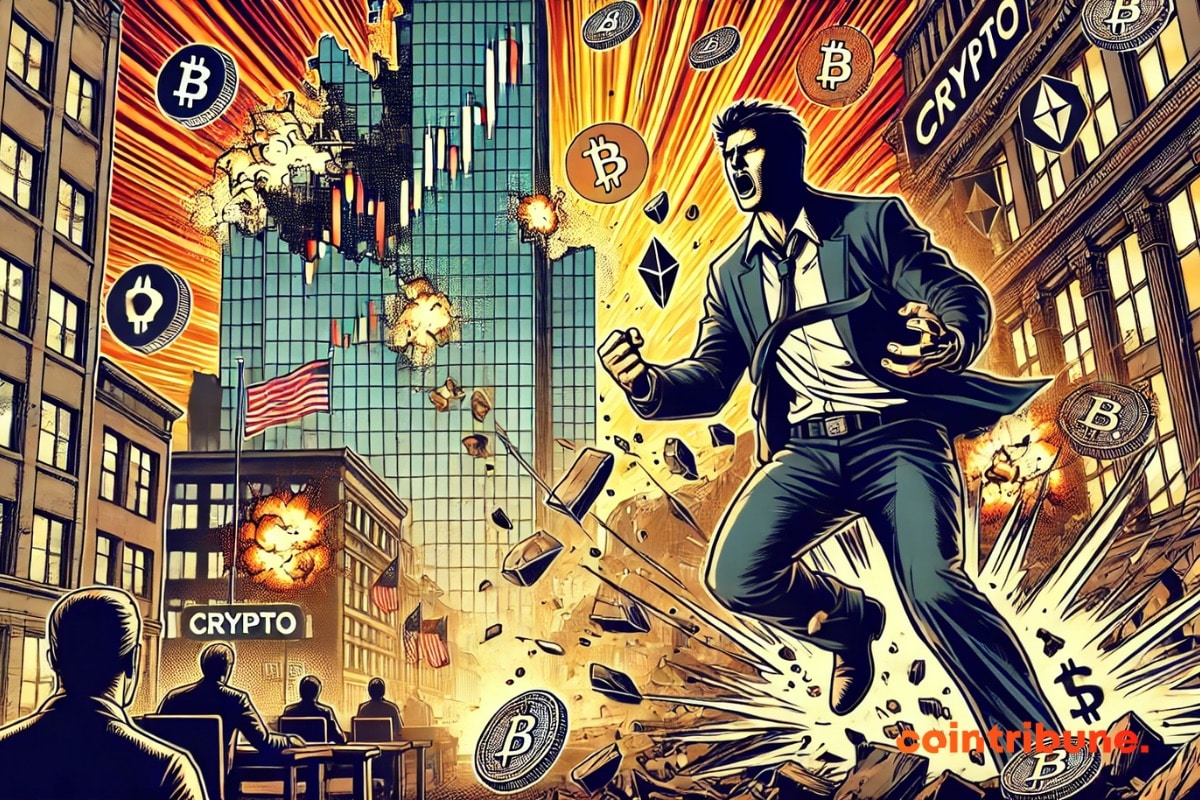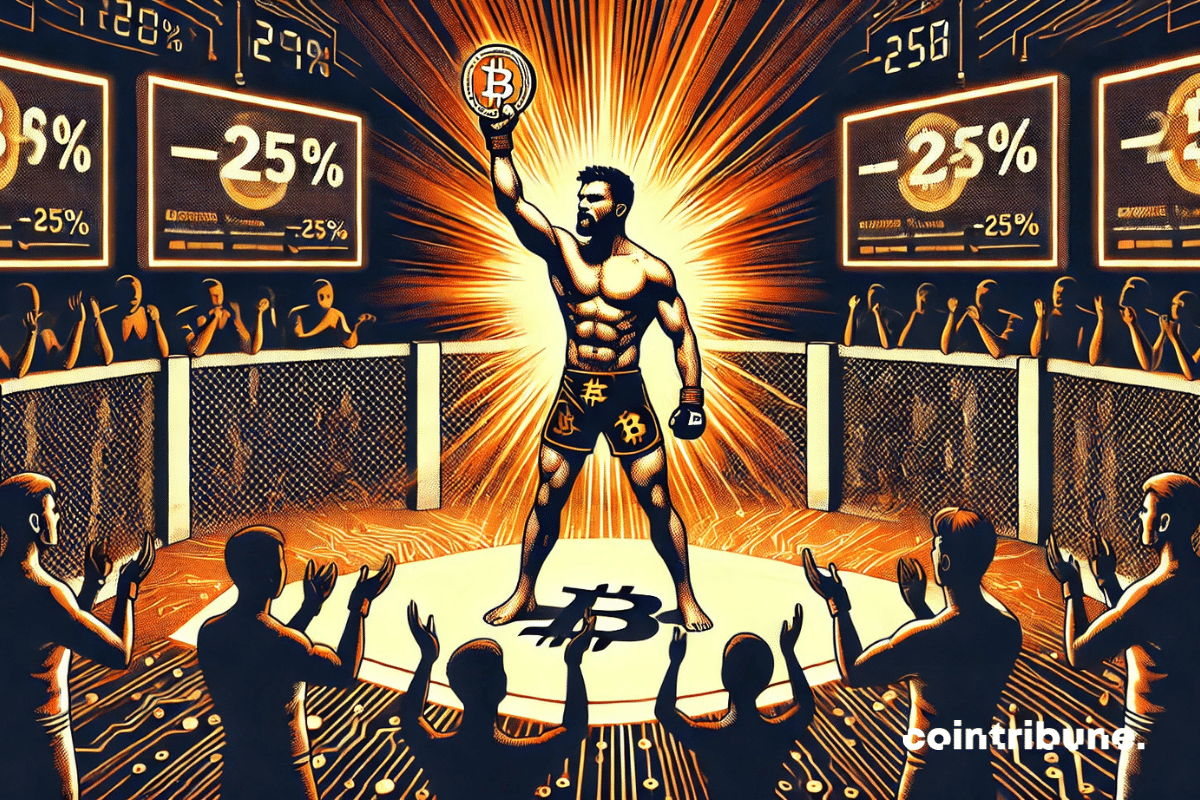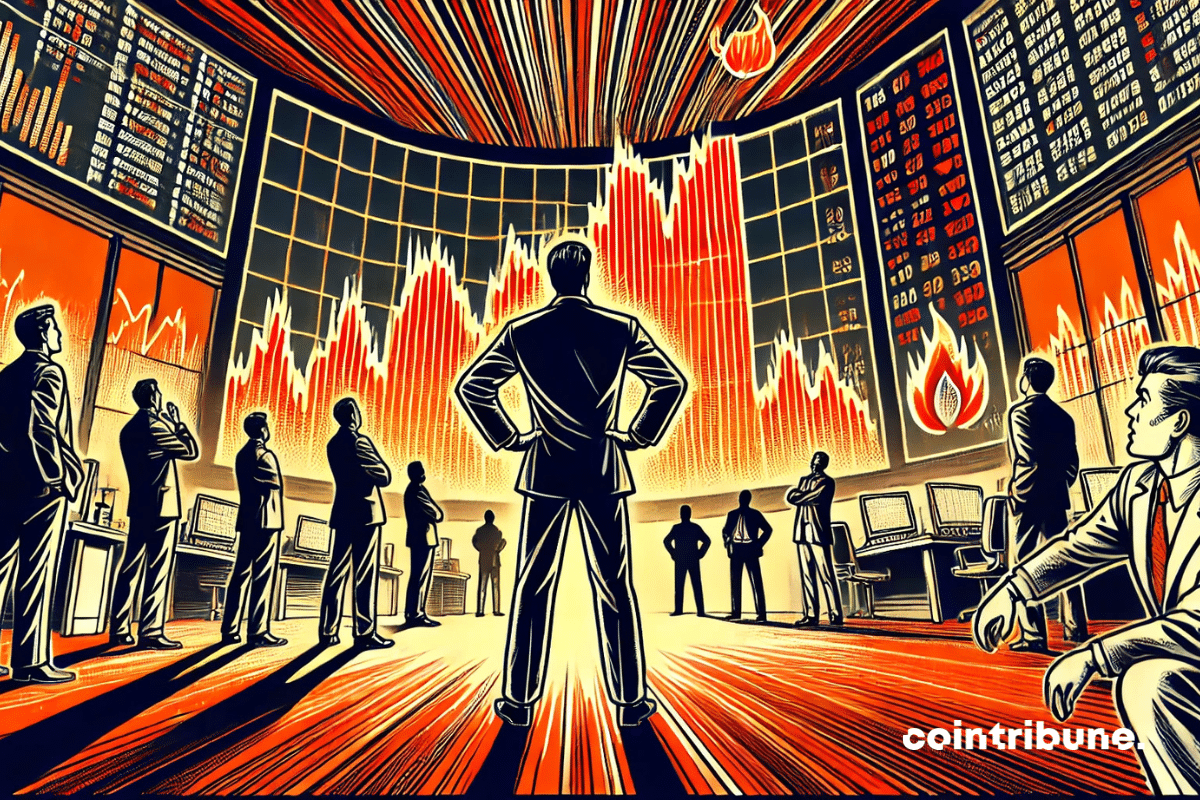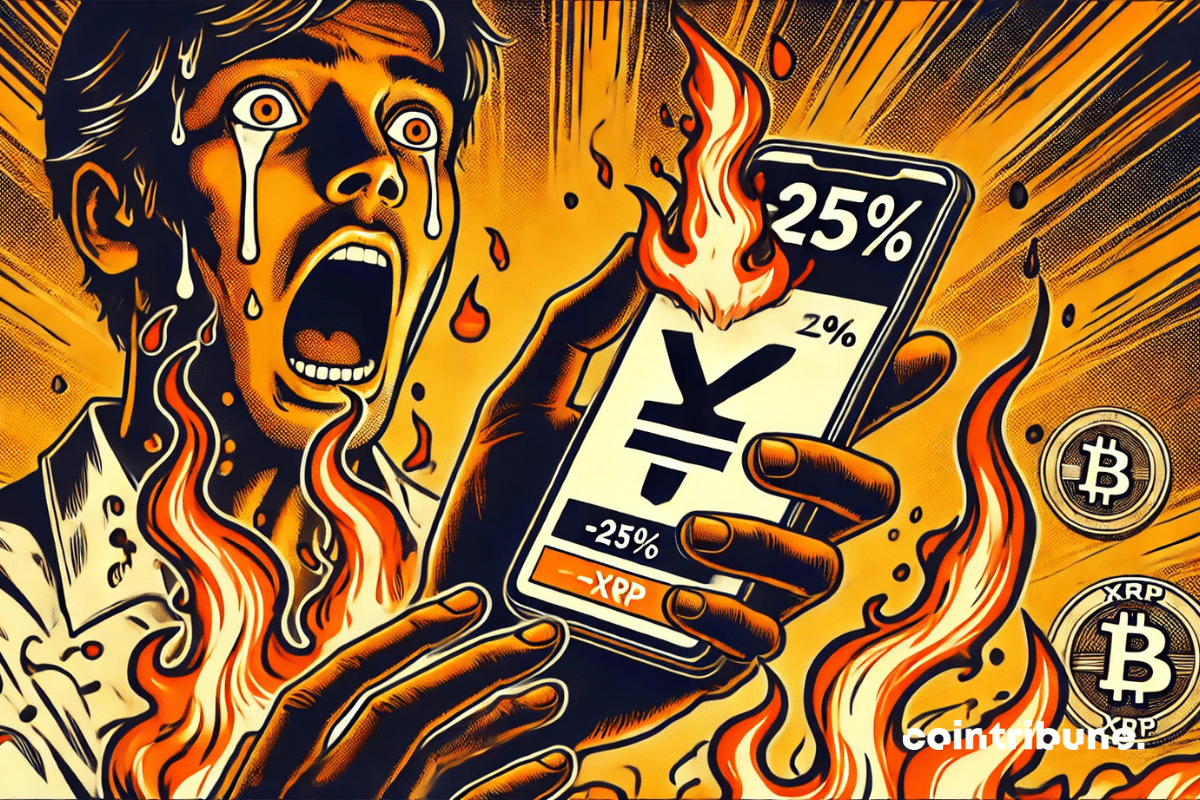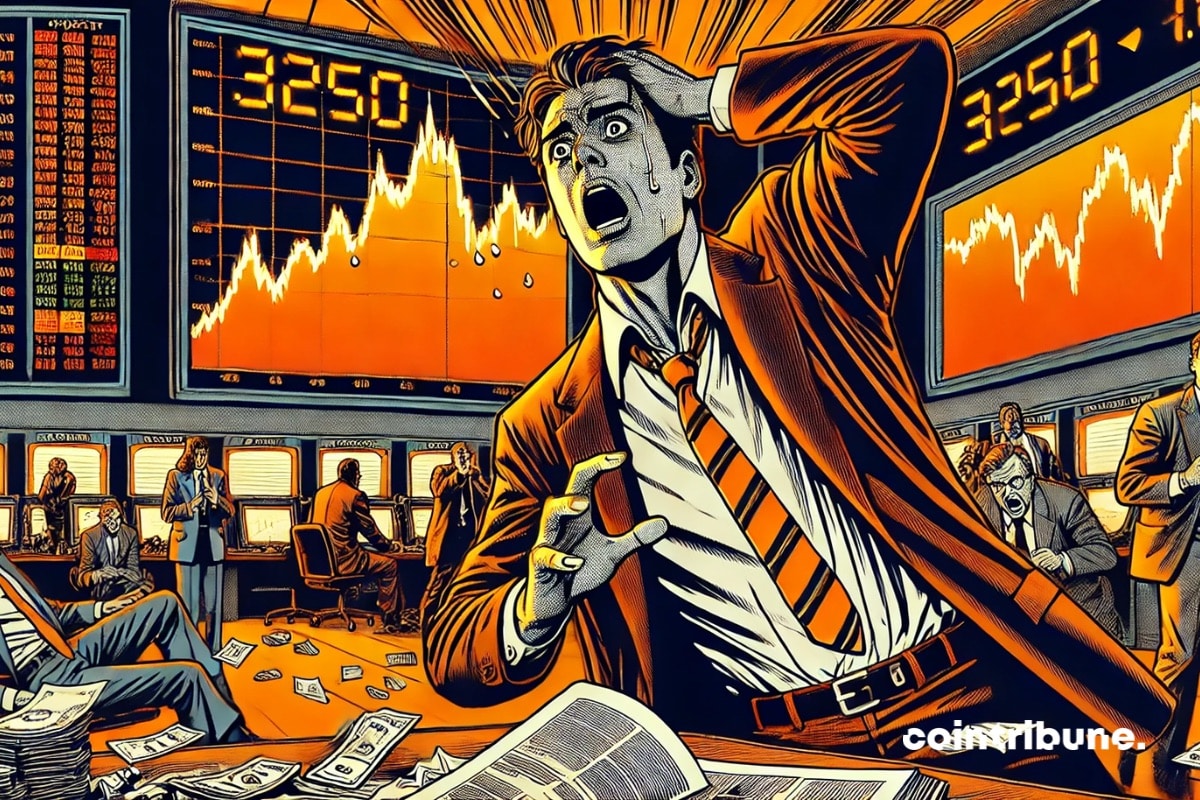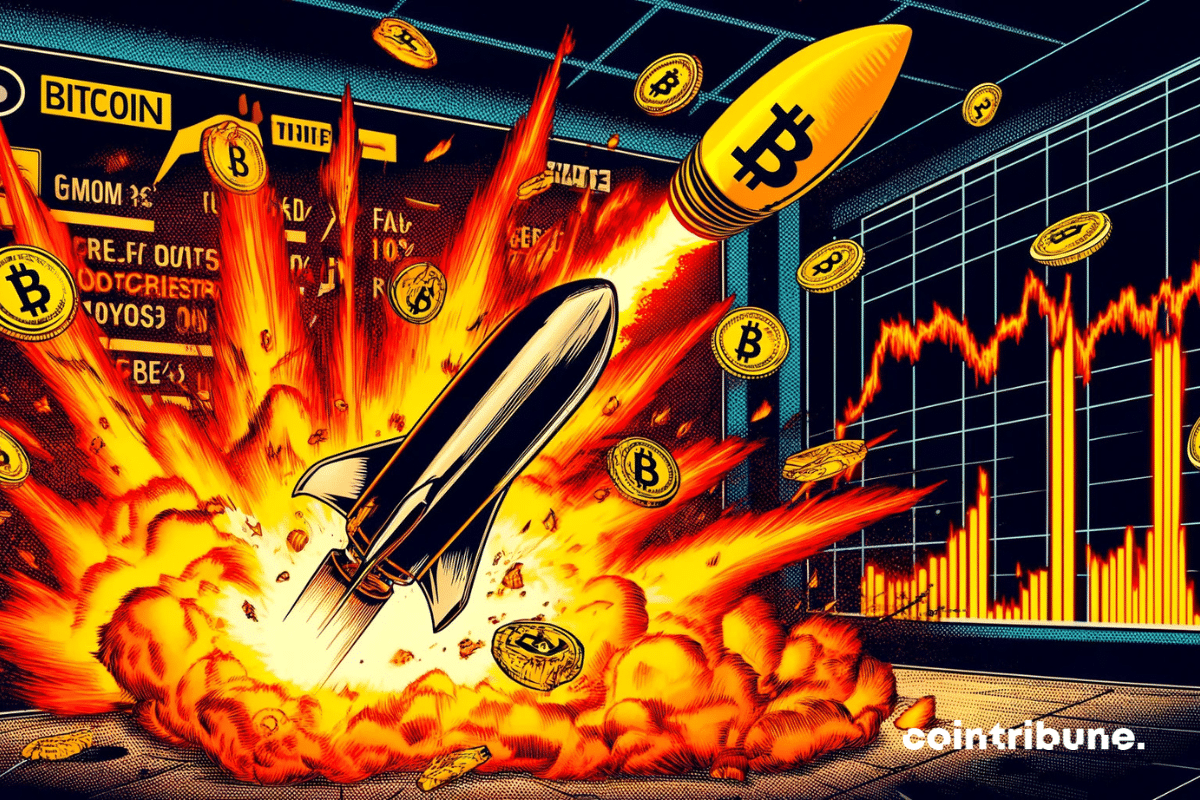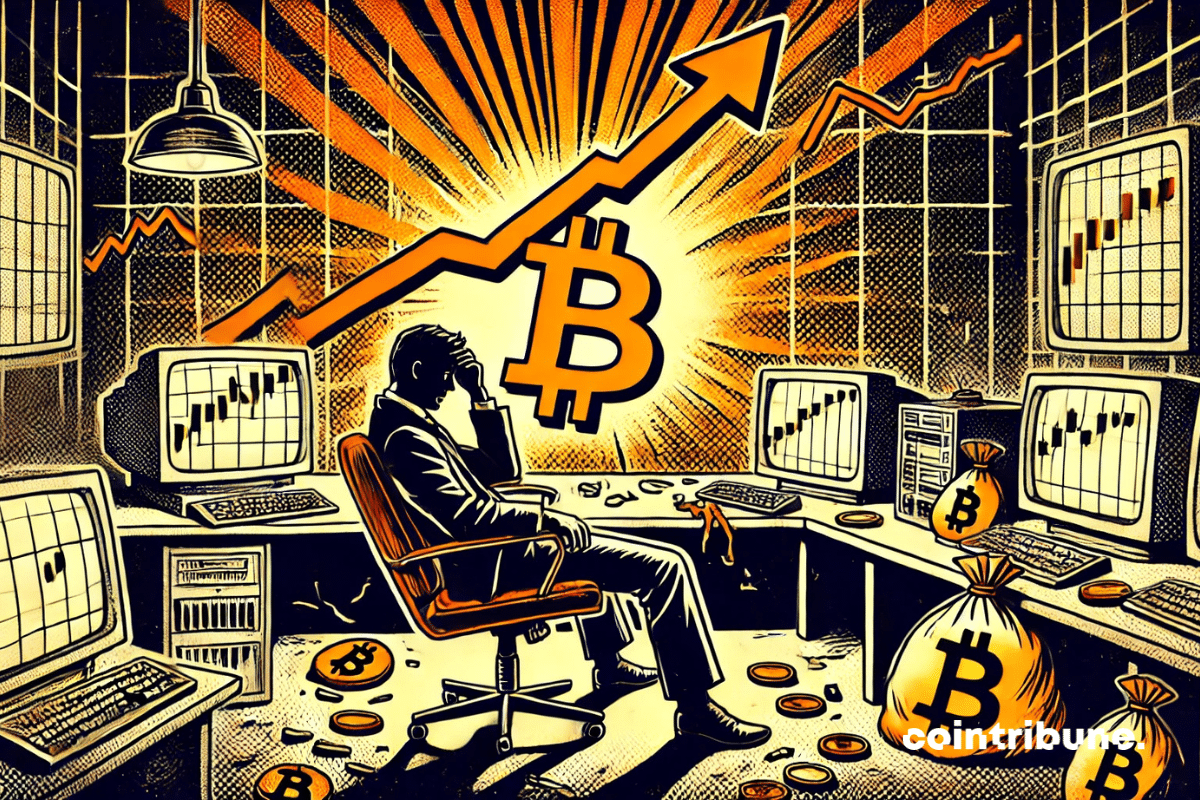After five months of suspension, the memecoin creation platform Pump.fun is gradually reintroducing its live streaming feature. This relaunch is accompanied by new moderation measures and comes in a challenging context for the memecoin ecosystem.
Short news
After reaching a new historical record at the beginning of the year, bitcoin recorded a decline of over 15% in the first quarter of 2025. This situation is causing concern among many short-term investors who are leaving the market with significant losses, comparable to those observed during the FTX collapse.
Bitcoin, often regarded as a safe haven against the volatility of traditional markets, finds itself this week caught in a global storm fueled by trade tensions between the United States and the rest of the world. Following a series of economic shocks, some analysts do not hesitate to compare the current situation to a Black Monday 2.0. But is it really the end of the bull market for Bitcoin or just a simple correction phase? Here are five key points to remember this week to understand the challenges Bitcoin is facing.
As clouds gathered over the crypto landscape, a lightning bolt split the sky: Ethereum, an indispensable pillar, lost 14% of its value in 24 hours. A brutal drop, amplified by the liquidation of an Ethereum whale for $106 million on Sky, the DeFi platform rebranded in August. Behind these numbers lie cold mechanisms, ruthless mathematical ratios, and a chain reaction cruelly reminiscent of the fragility of decentralized ecosystems. What if this debacle reflected a market still too sensitive to geopolitical shocks, such as Donald Trump's recent customs announcements? A deep dive into the guts of algorithmic carnage.
Trump's new taxes destabilize the markets. What are the consequences for the American economy? The full analysis here!
Decentralized exchange platforms are continuing their expansion in the crypto universe, challenging the supremacy of centralized players, despite a recent incident on Hyperliquid that resulted in a loss of several million dollars.
The amount of Ethereum available on exchanges has just dropped to its lowest level since 2016. A strong signal, as on-chain movements trigger growing interest among analysts looking for leading indicators. This scarcity on exchanges could signal an imminent imbalance between supply and demand, which could lay the groundwork for a potential tightening of availability in the market.
The Trump administration has just triggered a real commercial earthquake. Through the imposition of a universal customs tax of 10%, soon raised to 34% for certain countries, Washington is reviving an aggressive protectionist strategy. This decision, counter to multilateral rules, threatens to reconfigure global trade and is already prompting reactions from more than 50 states. In a tense international context, this major shift could well mark the beginning of a new era of economic confrontation.
The FTX saga continues to shake the crypto ecosystem. Nearly 400,000 creditors of the now-bankrupt platform risk permanently losing their rights to refunds, estimated at over $2.5 billion. The cause: the failure to adhere to the mandatory identity verification process, the famous KYC (Know Your Customer).
The Ethereum network has reached a historic milestone with 200,000 addresses holding stablecoins. This record adoption stands as the backbone of a more mature digital economy, potentially reshuffling the cards for this altcoin whose price is struggling to take off.
While stock markets are experiencing a historic loss, Bitcoin is losing ground and has fallen below 80,000 dollars. This decline, far from being trivial, reignites the debate about its safe haven function. At a time when trade and political tensions are reshaping the global economy, the line between traditional assets and cryptocurrencies is blurring. A moment of truth is therefore approaching for BTC and for investors' allocation strategies.
The crypto market is experiencing one of its most violent crashes today. After resisting the Trump storm until now, it has finally given in! In just 60 minutes, over 200 million dollars have been liquidated, taking with them the hopes for a short-term rebound. As a result, the total market has fallen to 2.51 trillion dollars, showing a loss of more than 5% in less than 24 hours.
Numbers are plummeting, volumes are exploding, and institutional investors are quietly slipping away. Bitcoin ETFs may be entering this pivotal moment where silence speaks louder than words.
While instability dominates the crypto universe, Pi Network surprised everyone with a 50% surge in just 24 hours. This spectacular rebound, following a prolonged decline, rekindles interest in a project still seeking institutional recognition. However, behind the apparent enthusiasm, contradictory signals remain. Does this rebound mark the beginning of a solid recovery, or is it merely a temporary spike?
Meta has just unveiled Llama 4, its most advanced artificial intelligence model to date. According to David Sacks, AI advisor at the White House, this technological advancement restores the United States' edge in the global competition for supremacy in AI.
The crypto universe is anything but routine. This time, it's Conor McGregor, MMA icon and seasoned entrepreneur, shaking up the market with his memecoin "Real." Launched via a sealed auction—a first to avoid manipulation—this project combines crypto audacity with a formidable marketing strategy. Between revolutionary promises and analyst skepticism, "Real" raises a burning question: what if McGregor manages to change the game... for a fourth time?
When the crypto market succumbs to hype and spectacular narratives, fundamental signals get drowned out in the noise. However, it is precisely in these phases of disconnection between valuation and on-chain data that real dynamics take shape. Solana embodies this paradox today. Driven by metrics in sharp progression, yet underestimated by the market, the blockchain offers a very real potential that few seem willing to face.
Cryptocurrency is no longer a marginal experience. It is now embedded in the daily lives of millions of Americans, reshaping the contours of their financial autonomy. A recent study by the National Cryptocurrency Association reveals that 55 million adults hold digital assets. Among them, 76% believe that this technology has improved their quality of life. Far from clichés about speculation, these figures unveil a more nuanced reality: massive, pragmatic adoption, and a source of concrete hopes.
As Bitcoin strengthens its dominant position in the markets, the Kaiko Research report upends expectations for 2025: forget the widespread altseason of the past, only a few carefully selected altcoins will stand out this year.
As the American economy wobbles, Donald Trump secures a strategic victory in the Senate with the unlocking of a controversial budget. Behind this success lies a political clash with global repercussions. For both investors and crypto players, this vote opens an uncertain sequence that could redefine financial balances and impact the trajectory of markets.
While the crypto market seeks new breath after a dynamic start to the year, XRP is sinking into a bearish spiral. Ripple's asset has already lost more than 35% since its peak in January, and technical indicators point to a possible worsening. An unfavorable chart setup could lead to an additional drop of 25% this month. In this climate of uncertainty, XRP appears to be one of the most fragile assets at the moment, exposed to increasing selling pressure and disengagement from major investors.
Behind the overwhelming losses of SHIB wallets, the infrastructure still roars. Between discouragement and rumors of resurgence, the ecosystem slowly burns, ready to reignite the speculative flames.
Experienced traders continue to show interest in memecoins despite the obvious signs of exhaustion in the speculative market for these particular cryptocurrencies.
A historic day on Wall Street: on April 4, 2025, American markets lost $3.25 trillion, more than the total market capitalization of crypto. This brutal drop, triggered by tariff measures from Trump, reveals a deep crisis. Bitcoin, however, endures. An analysis of an economic shift.
In a geopolitical context undergoing a major reshuffle, two significant initiatives are shaking the hegemony of the dollar. Brazil and China are making a strategic shift by favoring their national currencies for bilateral exchanges. For their part, Russia and Iran are announcing the launch of a new common currency to circumvent Western sanctions. These distinct yet converging movements illustrate a shared desire among influential BRICS members: to build a financial system that is less dependent on the greenback and to assert monetary sovereignty in the face of external pressures.
The mysterious creator of Bitcoin, Satoshi Nakamoto, celebrates his 50th birthday today, as his innovation revolutionizes global finance and now attracts major economic powers.
Bitcoin shows a surprising resilience in the face of market collapse. While gold retreats, it rises alone toward $100,000, fueled by a breakthrough narrative.
The sudden calm that falls over a network as active as XRP is never trivial. After a stunning rally at the end of 2024, Ripple's blockchain is experiencing a plunge in its activity. This drop of 65% in just a few weeks is more than just a simple adjustment. It reveals a worrying loss of momentum and raises questions about the strength of the market. Behind the numbers, an entire speculative dynamic seems to be wavering.
Bitcoin may soon have to sacrifice some of its coins to survive the quantum era. In the face of the growing threat from quantum computers, a radical plan is on the table: to permanently burn thousands of bitcoins. This controversial project, called QRAMP ("Quantum-Resistant Address Migration Protocol"), proposes a hard fork to secure the network at the cost of a partial destruction of non-migrated BTC. The Bitcoin community must now choose between immediate security and absolute adherence to the original principles of cryptocurrency.
The sentiment for bitcoin is at its lowest since the beginning of 2023. However, several analysts are identifying encouraging signs of a possible change in momentum as the queen of cryptos shows remarkable resilience in the face of recent volatility in the US stock markets.

